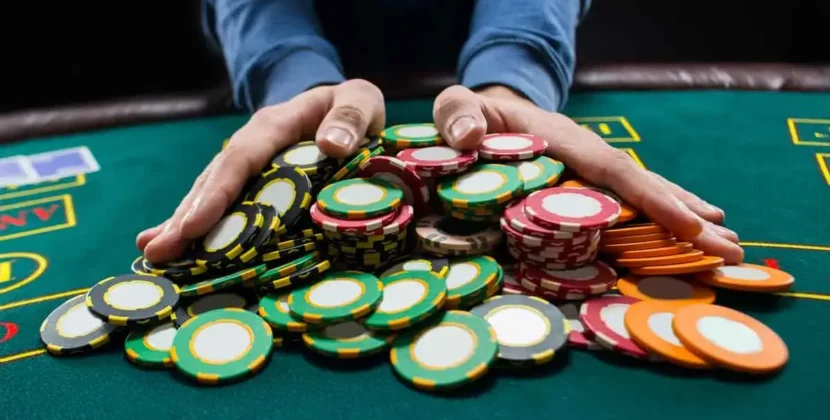
Bluffing is a cornerstone of poker, allowing players to leverage skill and strategy to secure victories, even when holding inferior hands. It introduces an element of psychological warfare into the game, making it more than just a test of the cards. Understanding when and how to bluff can be the difference between success and failure at the table. In this article, we will explore the nuances of bluffing in poker and provide strategies to elevate your game.
Understanding Bluffing
At its core, bluffing involves betting with the intention of convincing your opponent to fold a better hand. Although players typically bluff with weak hands, there are times when even a strong hand may be turned into a bluff if the player believes it won’t win at showdown. The essence of a successful bluff lies in the intention—it’s not just about having a weak hand; it’s about making your opponent believe they are beaten.
The Reasons Behind Bluffing
Poker players bluff for several reasons. Primarily, bluffing provides a pathway to win pots even when holding weak hands. If players never bluff, opponents can easily fold their way to victory whenever they perceive a strong bet. By incorporating bluffs into their strategy, players force their opponents to make difficult decisions, balancing between calling and folding.
A well-executed bluff creates an environment where opponents must second-guess their hands, ultimately making their decisions less predictable. The objective is to create a balance between bluffing and value betting so that opponents are indifferent between calling or folding. When they call too often, your bluffs become profitable, and when they fold too often, your value bets yield positive returns.
The Art of Bluffing
Bluffing may seem straightforward—bet when you think you have the worst hand—but the challenge lies in selecting the right moments to do so. Here are some essential strategies for effective bluffing:
- Choose Your Spots Wisely: It’s crucial to avoid bluffing in every situation where you lack a strong hand. If you bluff too frequently, opponents will catch on and call you down with marginal hands. Look for situations where your opponent’s range is likely weaker than yours.
- Read Your Opponent: Hand reading is vital when considering a bluff. Analyze your opponent’s actions throughout the hand. If they play passively, they may not hold a strong hand. Bluffing against a player who has shown aggression may be less effective, as they are likely to call with a wider range of hands.
- Consider Your Own Range: Before attempting a bluff, assess your hand range based on your previous actions. If your betting patterns suggest that you could have strong hands, your bluff is more likely to succeed. Conversely, if you have played passively, opponents may be less inclined to fold.
- Evaluate the Board Texture: Certain board configurations are more conducive to bluffing. If the board favors your perceived range, you can confidently apply pressure on your opponent. For instance, if you hold a broad range of strong hands that connect with the flop, it’s a prime opportunity to bluff.
Types of Bluffs
There are two primary types of bluffs:
- Semi-Bluff: This involves betting with a drawing hand that has the potential to improve. For example, if you hold a flush or straight draw, you can apply pressure while still having a chance to win if your opponent calls.
- Pure Bluff: This is when you bet with no chance of improving your hand. While pure bluffs can be effective, they rely entirely on your opponent folding, making them riskier.
Recognizing a Bluff
If you find yourself on the receiving end of a bet, here are a few tips to help determine whether your opponent is bluffing:
- Analyze Their Line: Assess whether their betting pattern makes sense based on previous actions. If their current bet doesn’t align with a logical range of hands, they may be bluffing.
- Consider Bet Sizing: Some players inadvertently alter their bet sizes between bluffs and value bets. Watch for inconsistencies; for instance, if a player bets significantly larger when bluffing, it could signal a lack of confidence in their hand.
- Monitor Player Behavior: Tells can be subtle but significant. Observe your opponent’s body language, chip handling, and eye movements. An alert player will pick up on these cues, which may indicate strength or weakness.
Essential Bluffing Tips
To improve your bluffing game, keep these key points in mind:
- Craft a Convincing Narrative: Ensure that your bluff aligns with a plausible story based on your actions and hand range.
- Maintain Consistent Bet Sizing: Use similar bet sizes for both bluffs and value bets to avoid revealing your hand strength.
- Leverage Favorable Boards: Target boards that enhance your range while putting pressure on your opponent’s perceived holdings.
- Opt for Semi-Bluffs When Possible: Having additional equity through draws makes semi-bluffing a safer and more profitable strategy.
- Avoid Bluffing into Strong Ranges: If your opponent has shown strength, consider folding instead of forcing a bluff.
- Maintain a Neutral Expression: To minimize tells, keep your demeanor consistent whether bluffing or betting for value.
Conclusion
Bluffing adds excitement and depth to poker, allowing players to capitalize on their opponents’ mistakes. By understanding the dynamics of bluffing and mastering the strategies outlined in this article, you can enhance your gameplay and increase your chances of success. Choose your moments wisely, remain aware of your opponents, and practice your skills to become a proficient bluffer.
For a thrilling poker experience, download WPT Global today and immerse yourself in the world of online poker and casino action!













